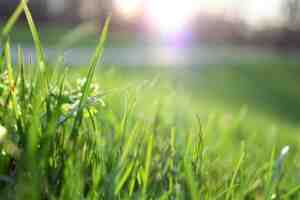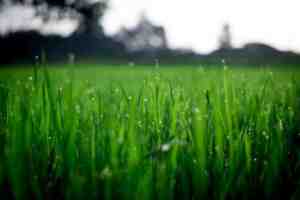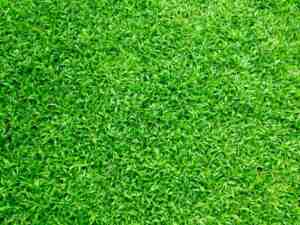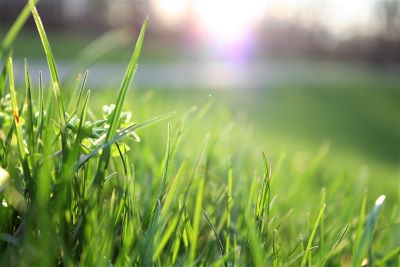Hey there! If you’re a proud homeowner with a beautiful lawn, you probably want to keep it healthy and vibrant. One of the most critical decisions you’ll have to make when it comes to lawn care is whether to use lime or fertilizer. Both are essential soil amendments that can help promote healthy plant growth, but which one is best for your lawn? In this article, we’ll explore the benefits and drawbacks of each, so you can make an informed decision and keep your lawn looking its best. So, let’s dive in and explore the age-old question: Lime vs Fertilizer: Which is Best for Your Lawn?
Which One is Best for Your Lawn?
Determining whether to use lime or fertilizer on your lawn depends on several factors, including your soil type, grass type, and lawn care goals.
- Soil type: If your soil is too acidic, lime may be the best option to neutralize the soil’s pH level. However, if your soil is already alkaline, adding lime may do more harm than good. In this case, fertilizer may be a better choice to provide essential nutrients to your lawn.
- Grass type: Different types of grass have different nutrient requirements. Some grasses may require more nitrogen than others, while some may require more phosphorus or potassium. Understanding your grass’s nutrient needs can help you choose the right fertilizer to promote healthy growth.
- Lawn care goals: Your lawn care goals can also impact whether to use lime or fertilizer. If you are looking to improve soil quality and prevent lawn diseases, lime may be the best option. If you want to promote healthy plant growth and maintain a lush, green lawn, fertilizer may be a better choice.
Ultimately, the best way to determine whether to use lime or fertilizer on your lawn is to conduct a soil test. A soil test can provide information about your soil’s pH level, nutrient content, and any deficiencies or imbalances. Armed with this information, you can choose the right soil amendment to meet your lawn’s specific needs.

The Difference Between Lime and Fertilizer
Before deciding which one to use, it’s essential to understand the difference between lime and fertilizer.
Lime is a soil amendment that is rich in calcium and magnesium. It helps to raise the soil’s pH level, making it more alkaline. Lime is often used to neutralize soil acidity, which can be harmful to grass growth. On the other hand, fertilizer is a nutrient-rich substance that is used to provide essential nutrients to the soil, promoting healthy plant growth.
Benefits and Drawbacks of Lime
Using lime on your lawn can have several benefits, including:
- Neutralizes soil acidity: Lime helps to neutralize soil acidity, creating an optimal pH level for grass growth.
- Improves nutrient absorption: When the soil pH is too low, essential nutrients such as nitrogen, phosphorus, and potassium become less available to plants. Adding lime can improve the soil’s nutrient availability, promoting healthy plant growth.
- Prevents lawn diseases: Some lawn diseases, such as dollar spot and red thread, thrive in acidic soils. Lime can help to prevent these diseases from damaging your lawn.

However, there are also some drawbacks to using lime, including:
- Takes time to work: Lime can take several months to work, meaning that you may not see immediate results.
- Can be overused: Adding too much lime can raise the soil’s pH level too high, making it too alkaline for healthy grass growth.
- Not suitable for all soil types: Lime is not suitable for all soil types. It is best used on acidic soils with a pH level of less than 6.0.
Benefits and Drawbacks of Fertilizer
Fertilizer also has several benefits for your lawn, including:
- Provides essential nutrients: Fertilizer provides essential nutrients such as nitrogen, phosphorus, and potassium, promoting healthy plant growth.
- Improves root development: Fertilizer can improve root development, making your lawn more resilient to drought and other stresses.
- Promotes green growth: Fertilizer can help to promote green growth, making your lawn look lush and healthy.
However, fertilizer also has some drawbacks, including:
- Can be overused: Applying too much fertilizer can lead to nutrient burn, damaging your lawn.
- Can harm the environment: Excess fertilizer can run off into nearby waterways, polluting the environment and harming wildlife.
- Short-lived effects: Fertilizer provides short-term benefits and needs to be reapplied regularly to maintain its effects.

FAQs
Q: Can I use lime and fertilizer together? A: Yes, you can use lime and fertilizer together. In fact, using both can provide a synergistic effect, as lime can improve nutrient absorption, making the fertilizer more effective.
Q: How often should I apply lime or fertilizer to my lawn? A: The frequency of application depends on several factors, including the type of soil, grass, and fertilizer used. Generally, lime should be applied every 3 to 5 years, while fertilizer should be applied 3 to 4 times per year.
Q: Is lime or fertilizer better for preventing weeds? A: Neither lime nor fertilizer is effective at preventing weeds. For weed prevention, it is best to use a pre-emergent herbicide.
Q: Can applying too much lime or fertilizer harm my lawn? A: Yes, applying too much lime or fertilizer can harm your lawn. Overapplication can lead to nutrient imbalances, which can damage plant roots and increase the risk of lawn diseases.
Q: Should I use organic or synthetic fertilizer? A: Both organic and synthetic fertilizers can provide essential nutrients to your lawn. Organic fertilizers are made from natural materials, such as compost or manure, and are typically slower to release nutrients. Synthetic fertilizers are made from chemical compounds and release nutrients more quickly. Ultimately, the choice between organic and synthetic fertilizers depends on your lawn care goals and personal preferences.
Q: How long does it take for lime or fertilizer to work? A: The time it takes for lime or fertilizer to work depends on several factors, including soil type, grass type, and weather conditions. Generally, you can expect to see results within a few weeks to a few months. However, some slow-release fertilizers can continue to provide nutrients for several months, while the effects of lime may last for several years.
Conclusion
Maintaining a healthy, lush lawn requires proper care and attention. Among the many decisions that homeowners have to make, choosing whether to use lime or fertilizer is one of the most critical. Both lime and fertilizer have unique benefits and drawbacks, and determining which one is best for your lawn depends on several factors, including soil type, grass type, and lawn care goals.
If you’re unsure which one to use, consider conducting a soil test to determine your lawn’s specific needs. Ultimately, using the right soil amendment can help keep your lawn looking green, healthy, and beautiful for years to come.

